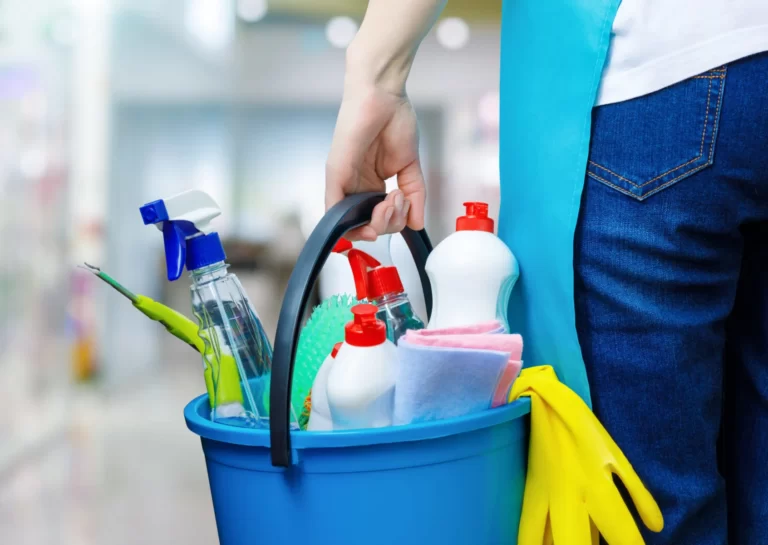
For those who frequently handle food and medical equipment, keeping hands clean, tidy, and free from bacteria is of utmost importance.
Brief disinfection of the hands is a fundamental measure to achieve this goal while ensuring that the outer gloves worn remain fairly clean is the most effective way to meet this criterion.
To improve the cost-effectiveness of gloves and ensure their long-term use, cleaning, and maintenance of gloves become essential subjects.
Improper maintenance can render gloves ineffective during rigorous use. It is necessary to wash and clean gloves to maintain their integrity.
The Centers for Disease Control and Prevention (CDC) recommends proper handling of all protective equipment used in medical facilities.
Gloves, being personal protective equipment requiring disinfection, should be cleaned and disinfected after each use to prevent any cross-contamination if they are intended for reuse.
So, how can gloves be better maintained? The following article will provide some guidelines for cleaning and storing rubber gloves.
How to wash or clean reusable gloves
Cleaning gloves can prolong their lifespan and prevent contamination. Regardless of the type of gloves, here are the steps to help you clean them:
If gloves need to be worn again immediately after use, wash the exterior of the gloves with soap or a mild detergent and hot water.
Then, wipe the gloves with a cloth to remove dirt, bacteria, and other organic matter.
Remove the gloves and fill a basin or sink with warm water, adding a small amount of mild dish soap or detergent.
Submerge the gloves from inside to outside in a mixture of soap and water for a few minutes.
Hang the gloves to air dry in a well-ventilated area. Make sure the gloves are completely dry before folding and storing them.
Store the clean rubber gloves in a dry place to prevent mold.
When Not To Wash
To protect yourself from infection, gloves should be immediately discarded if they have been in contact with blood, bodily fluids, or extremely dirty items for an extended period.
Gloves should also be discarded immediately if there are noticeable changes such as discoloration, tearing, punctures, or significant damage.
How to disinfect rubber gloves
Disinfectants are substances capable of eliminating microorganisms on inanimate objects, effectively killing bacteria, viruses, fungi, and other microbes by disrupting the chemical components of their DNA and proteins.
After washing gloves, whether latex gloves or other types, it is essential to ensure they are completely dry before sanitizing or disinfecting them.
Apply disinfectant or germicidal products to the exterior of the rubber gloves to kill any residual bacteria.
Before using such products, carefully read and follow the instructions on the label to avoid any mishaps. After use, hands should be washed immediately.
Important Reminder on Disinfecting Gloves
“Surface disinfectants registered with the Environmental Protection Agency, including surface wipes, should not be applied to the skin or ingested.“
For your safety, never use disinfectants to wipe the inside of gloves, as it may irritate the skin.
How to sanitize rubber gloves
Sanitizers are relatively mild chemicals used primarily to reduce the number of microorganisms.
They are commonly used in food processing, catering, household cleaning, and for disinfecting surfaces and objects in everyday life.
To disinfect gloves, both of the aforementioned disinfectants can be used, but each has its distinct functions.
Sanitizers vs Disinfectants
Sanitizer Concentration is relatively mild, primarily aimed at reducing the number of microorganisms rather than completely eradicating them.
This prevents the buildup of residues that could potentially harm food or irritate the skin.
Disinfectants with higher concentrations are potent chemical substances capable of killing, removing, or inhibiting the growth of bacteria, viruses, fungi, and other microorganisms.
They can effectively kill or deactivate the majority of pathogens within a specific timeframe, thereby preventing the spread of diseases.
However, they may leave harmful residues on food and skin.

How to sterilize latex gloves
Sterile latex gloves are commonly used in healthcare settings to effectively prevent the spread of microorganisms.
For tasks with minimal infection risk, you can also disinfect gloves at home.
Prepare a solution of ethanol with a concentration of about 70%. This concentration is generally effective in killing most microorganisms and bacteria.
If ethanol solution is not available, you can make your own, but for your safety, we recommend purchasing it.
Before disinfecting latex gloves, thoroughly wash your hands with soap and water.
Ensure that most areas of your hands are thoroughly cleaned, avoiding contact with any surface other than the gloves.
Thoroughly spray the outer surface of the gloves with the prepared ethanol solution, then flip the gloves inside out with your fingers.
Repeat this step until all areas of both gloves are covered.
Once the latex gloves have been disinfected, you can put them on and start working. However, be careful not to touch any surfaces or the ground before starting your work.
How to store reusable gloves
Store the cleaned gloves in a clean, dry area that has been disinfected to reduce the risk of contamination to the gloves.
Ensure they are stored in a well-ventilated area and avoid direct sunlight.
Before wearing, inspect the gloves. Any punctures, fading, or tears indicate potential issues.

